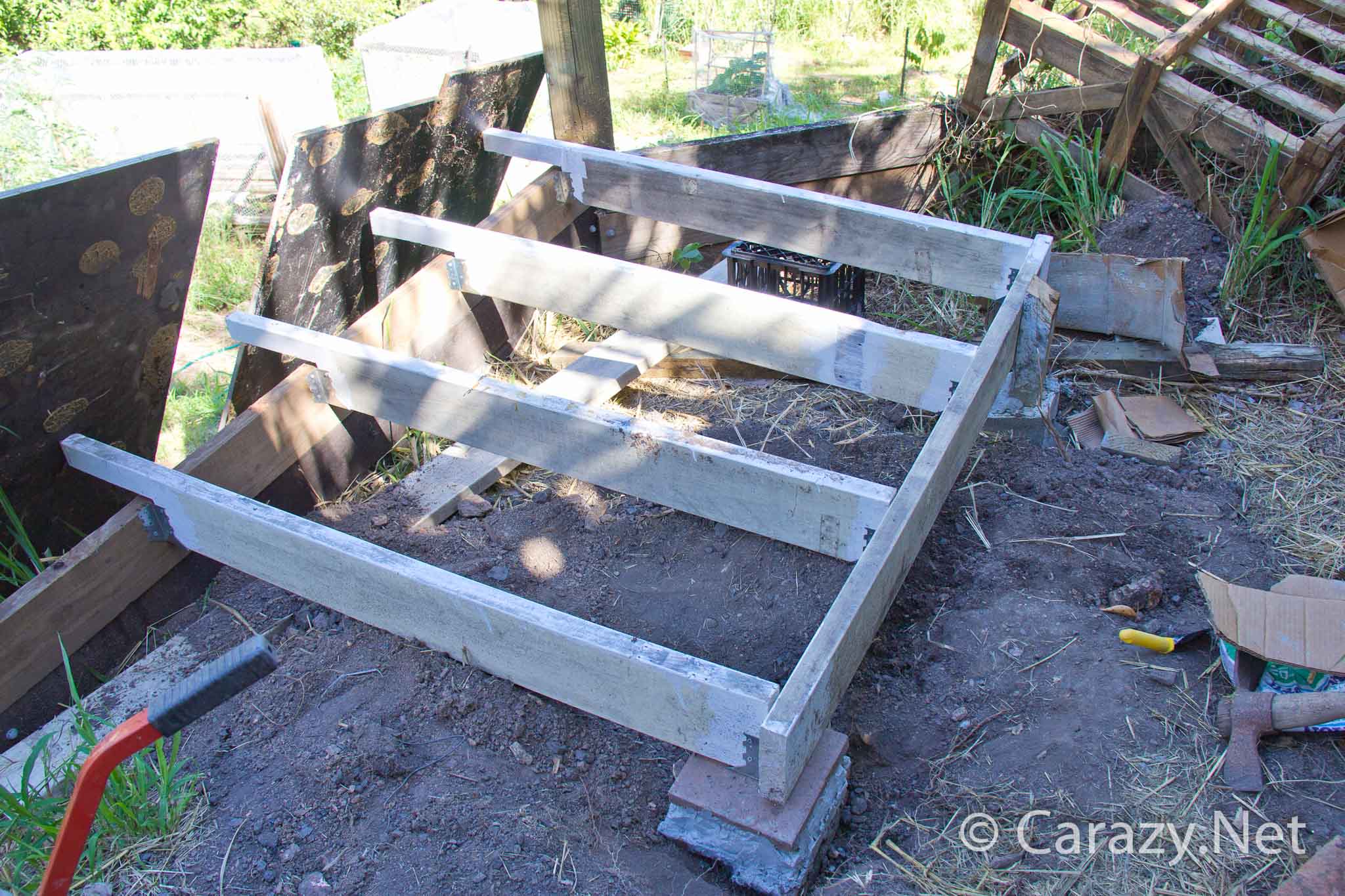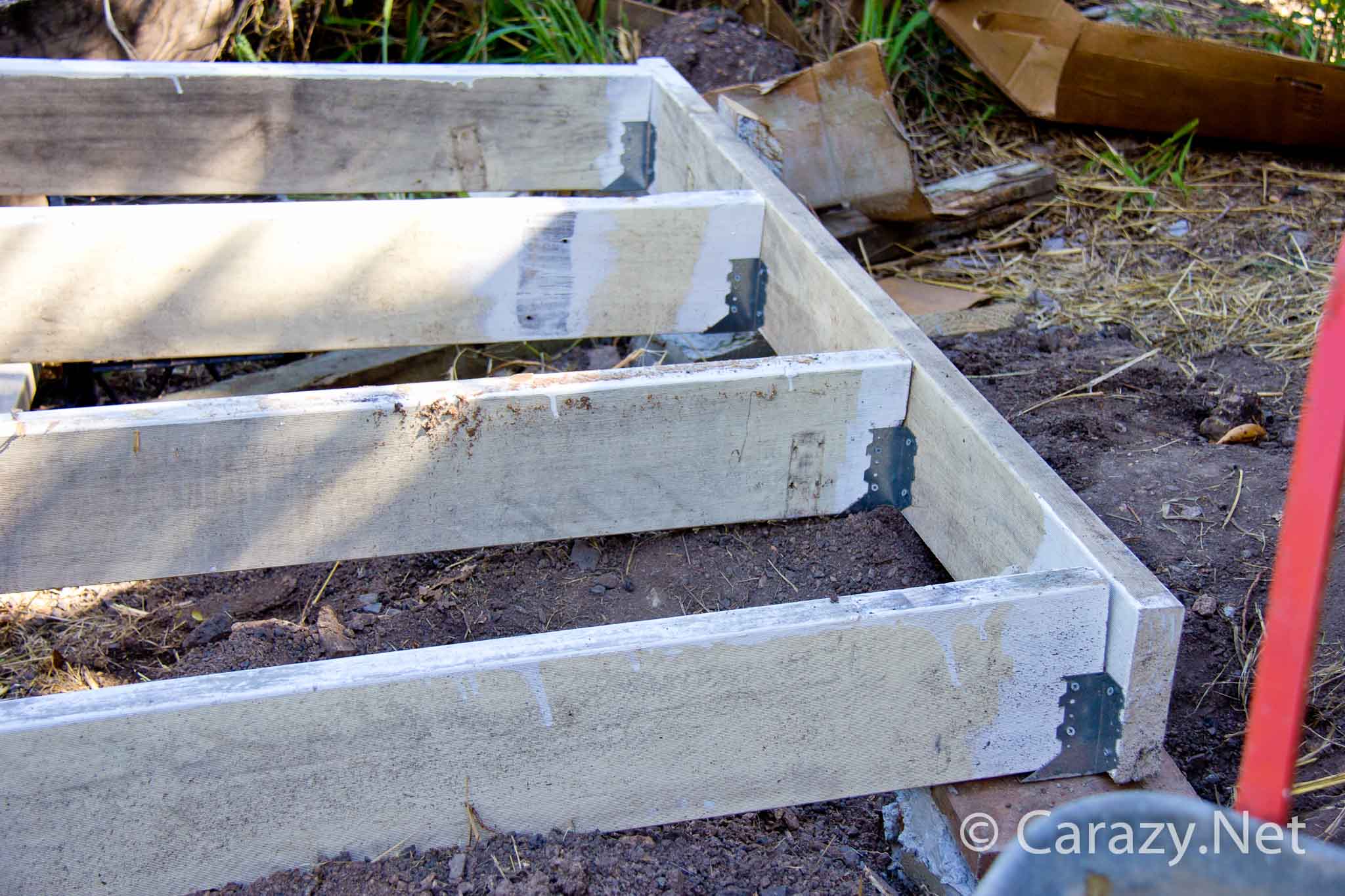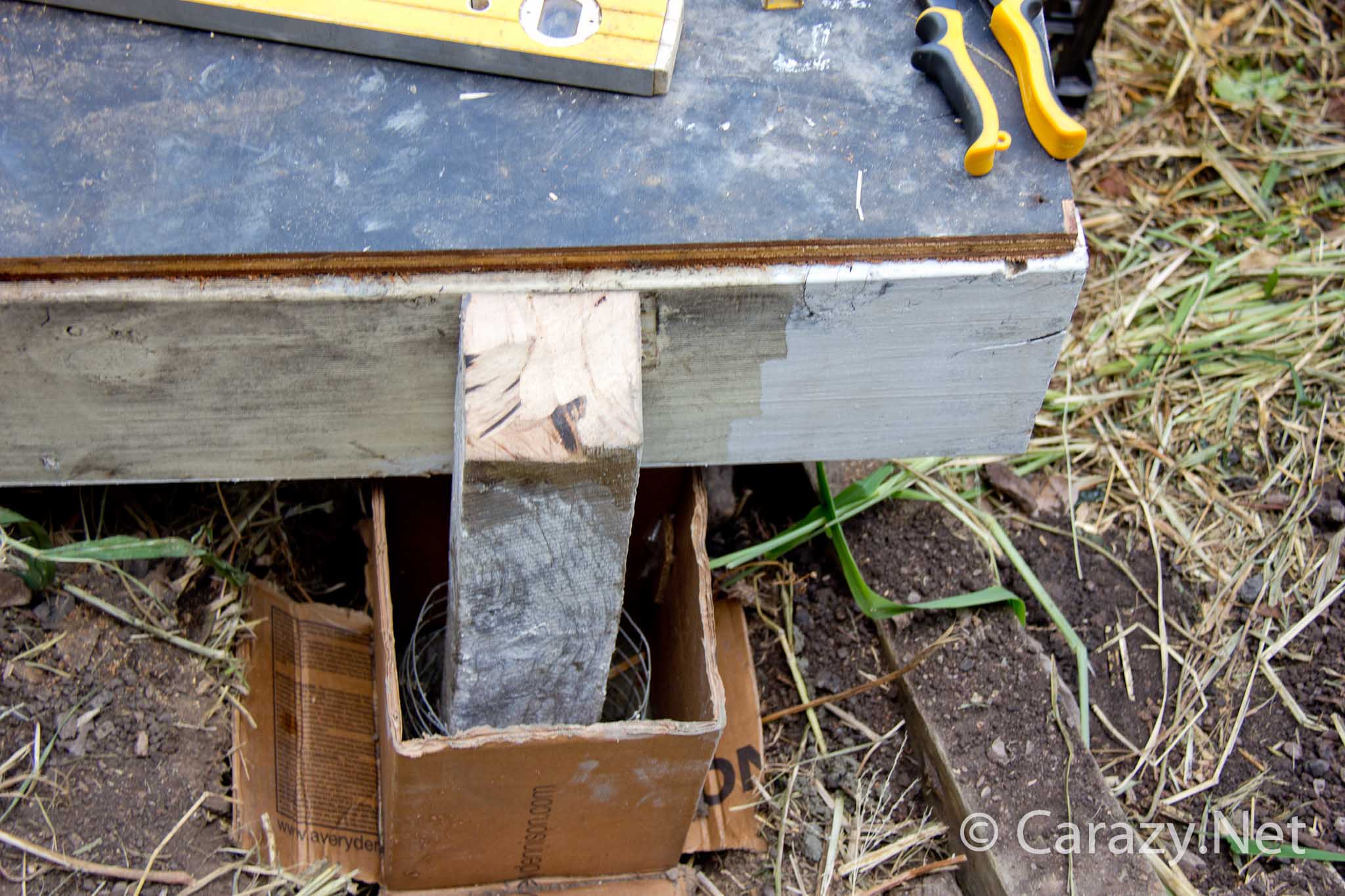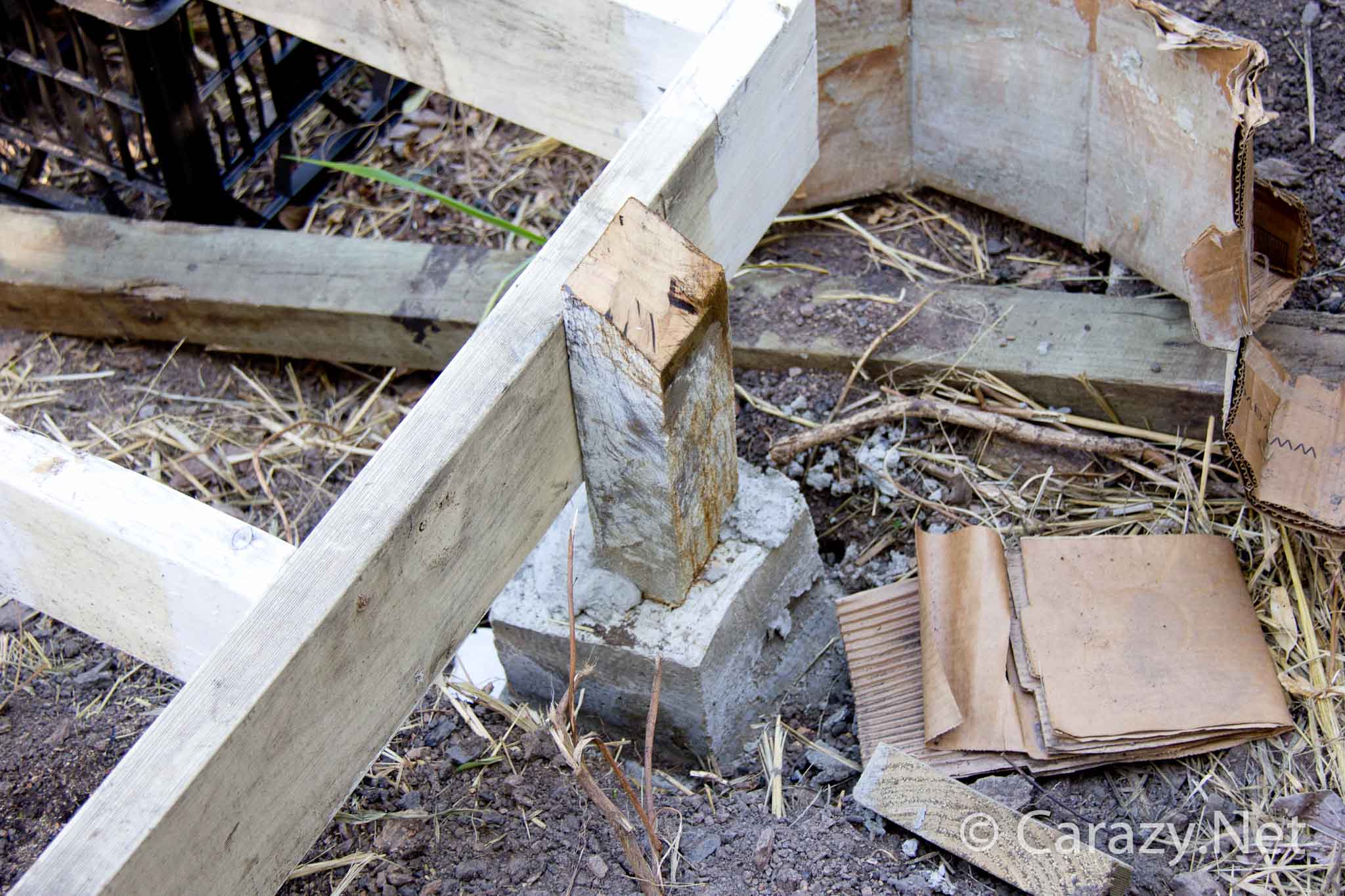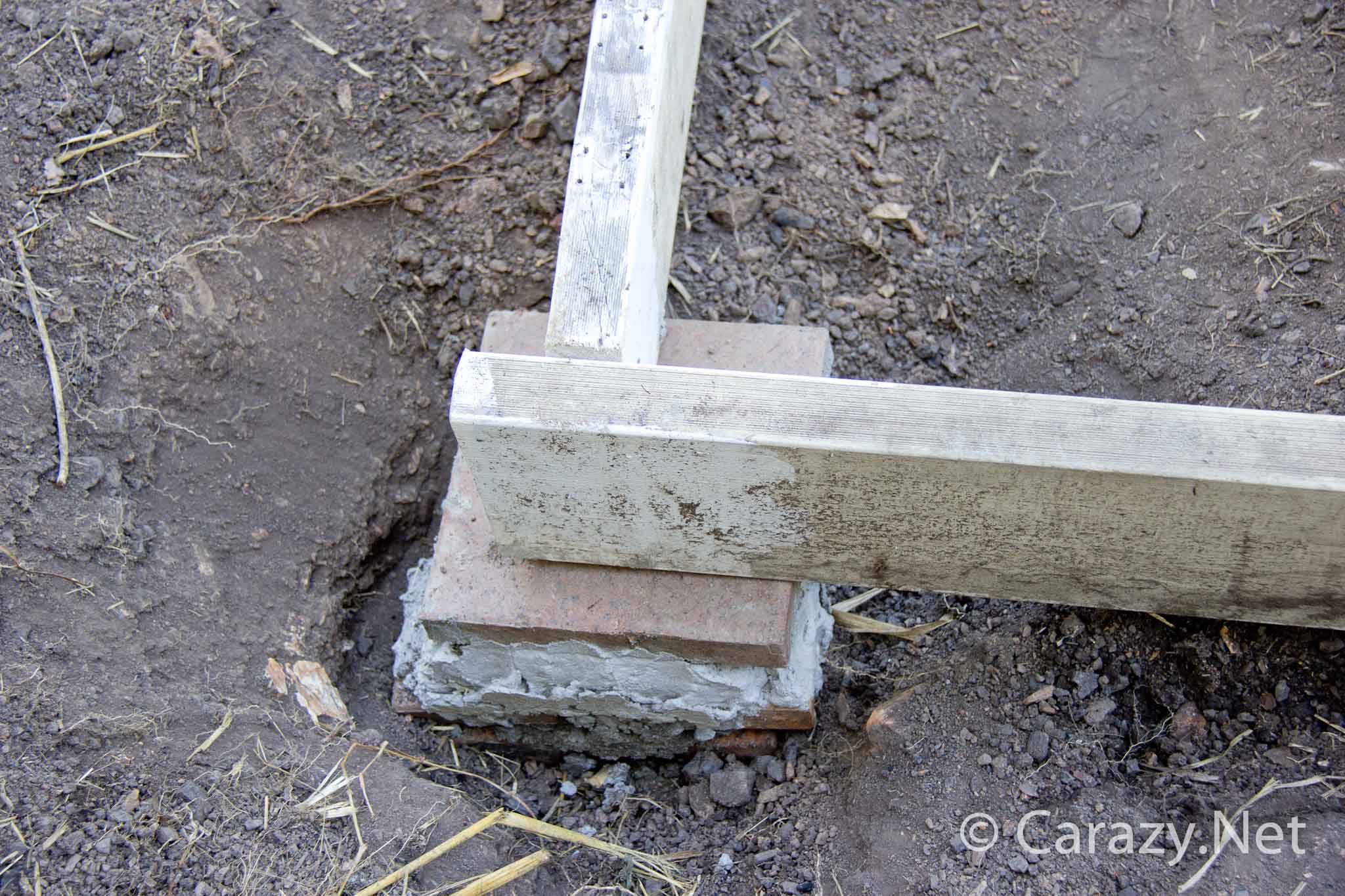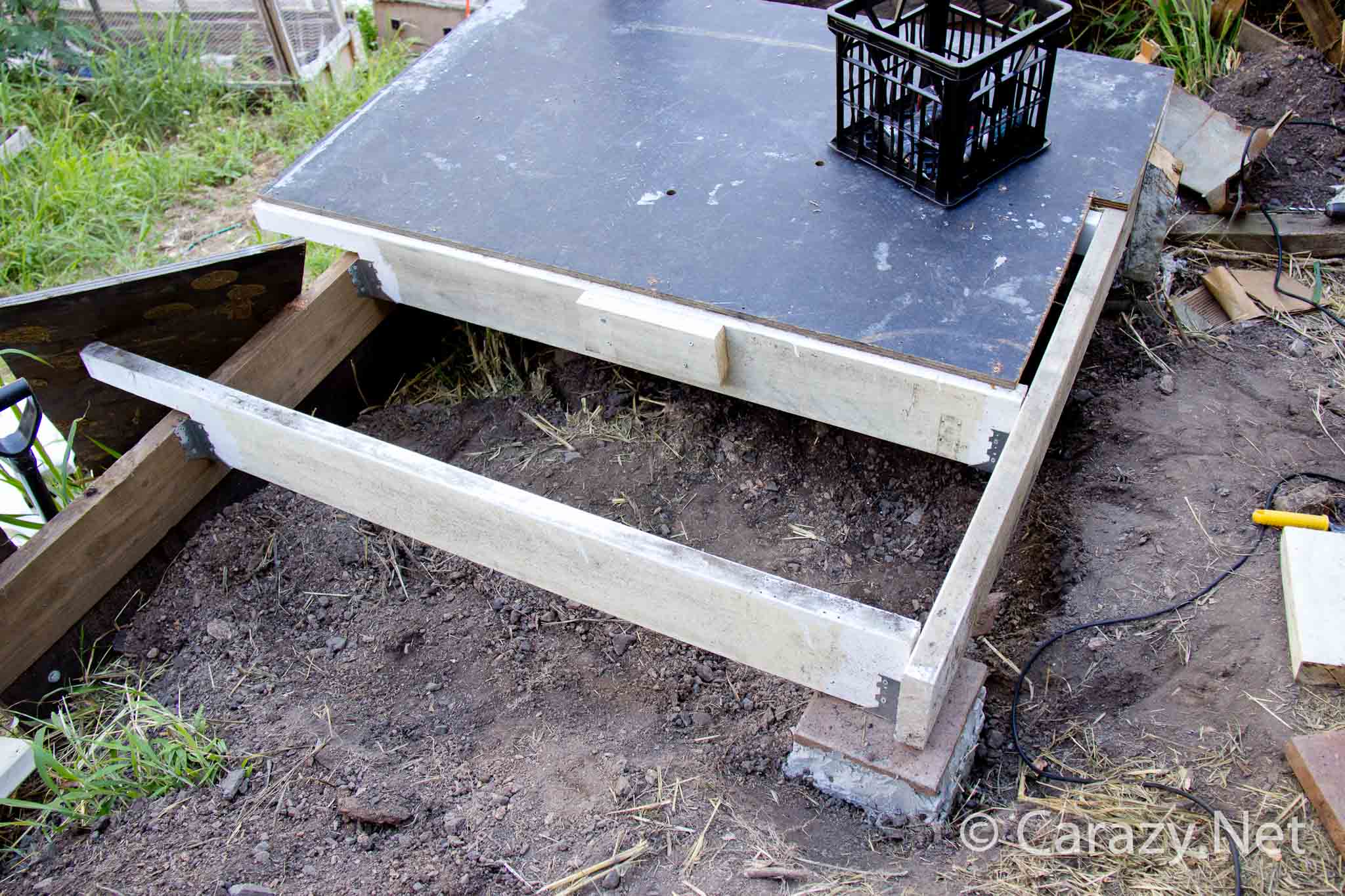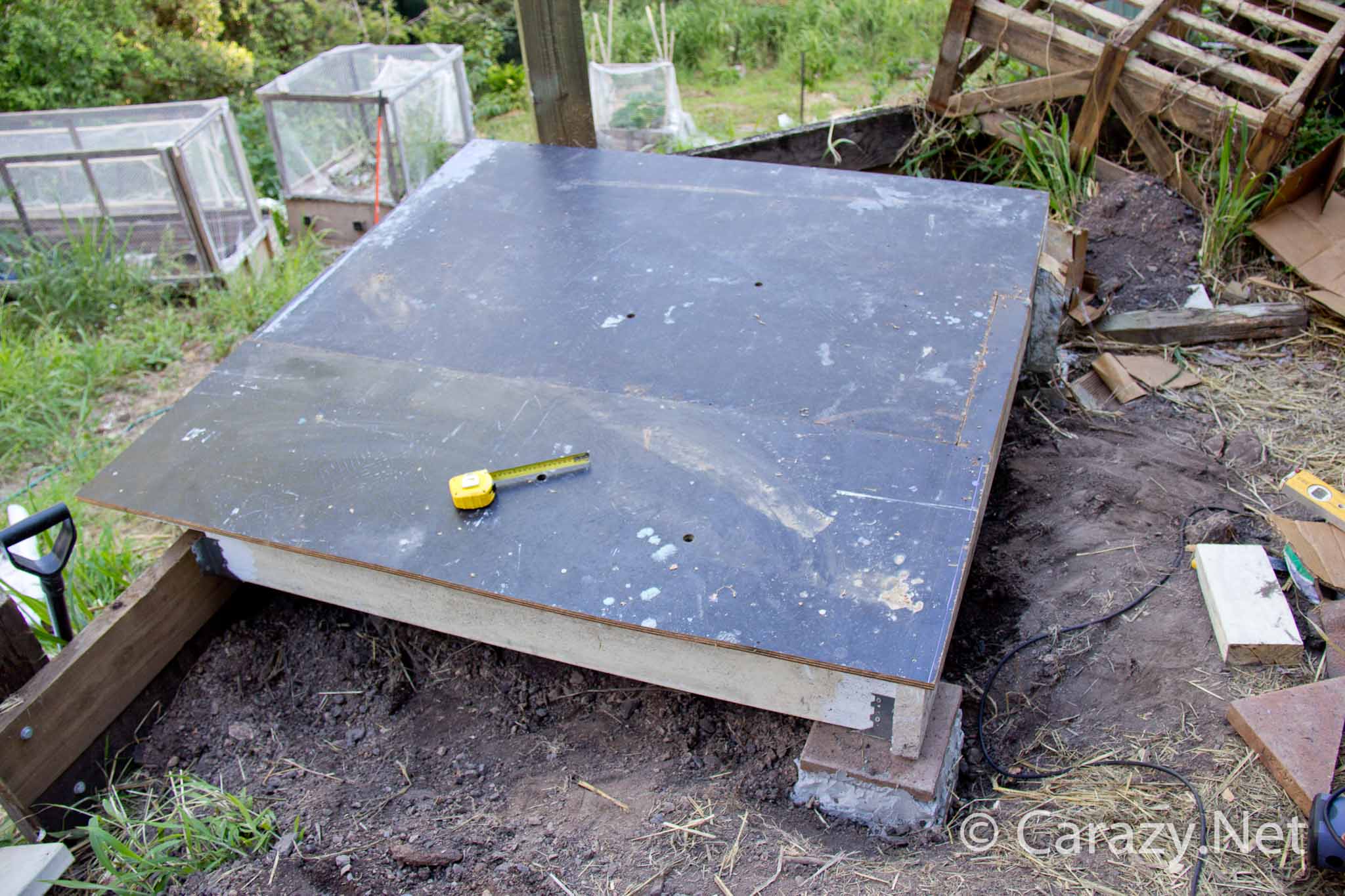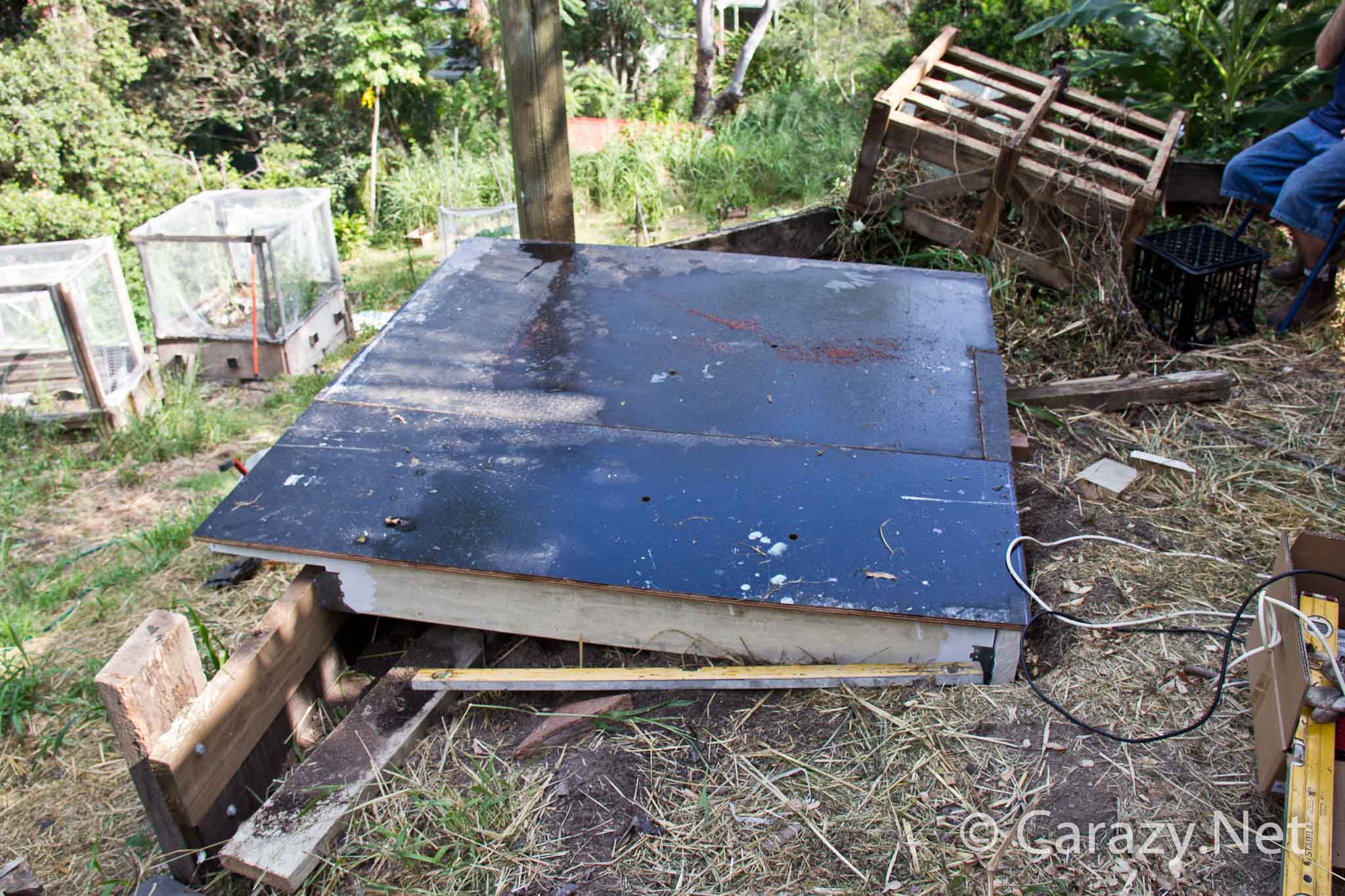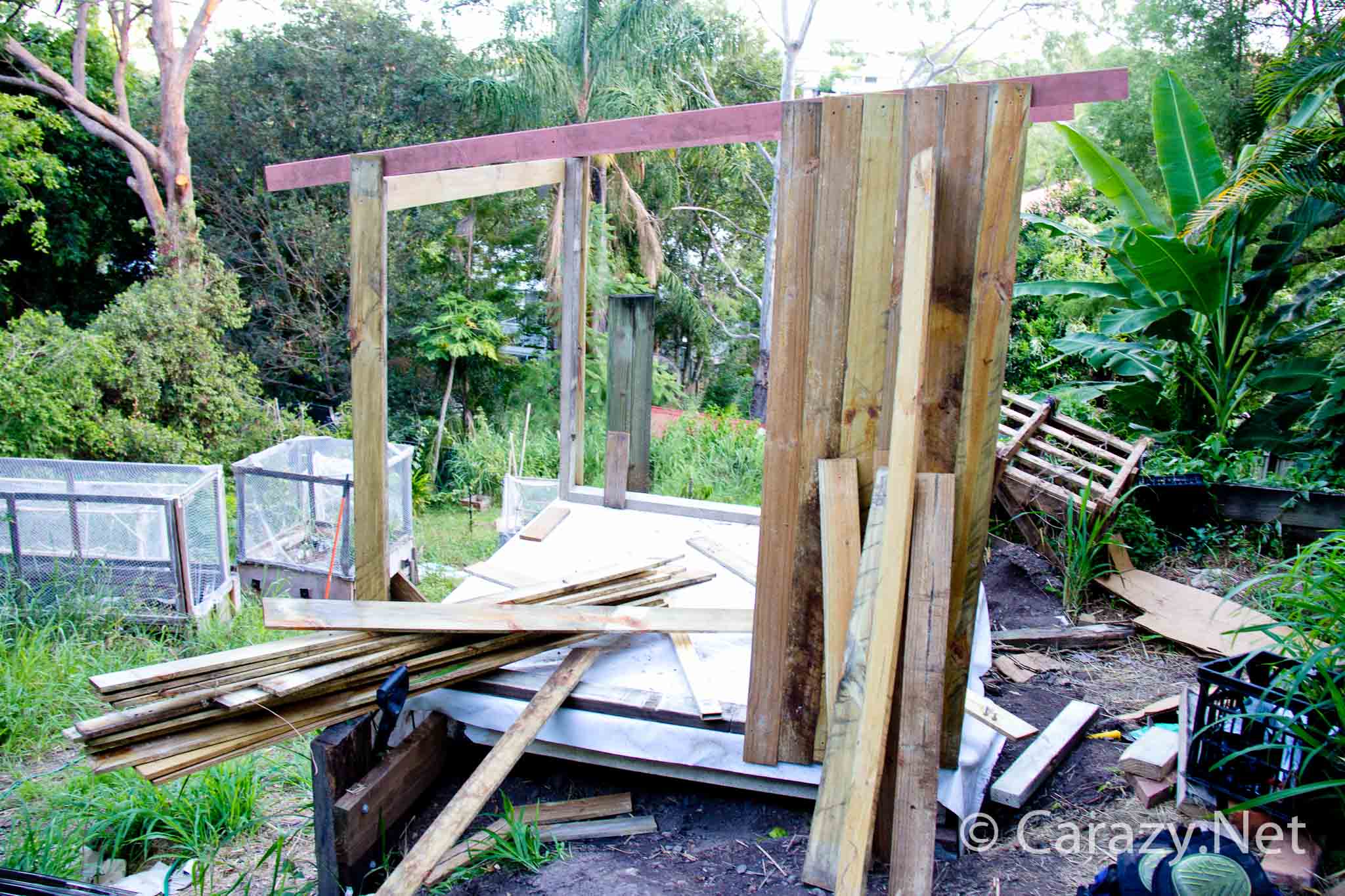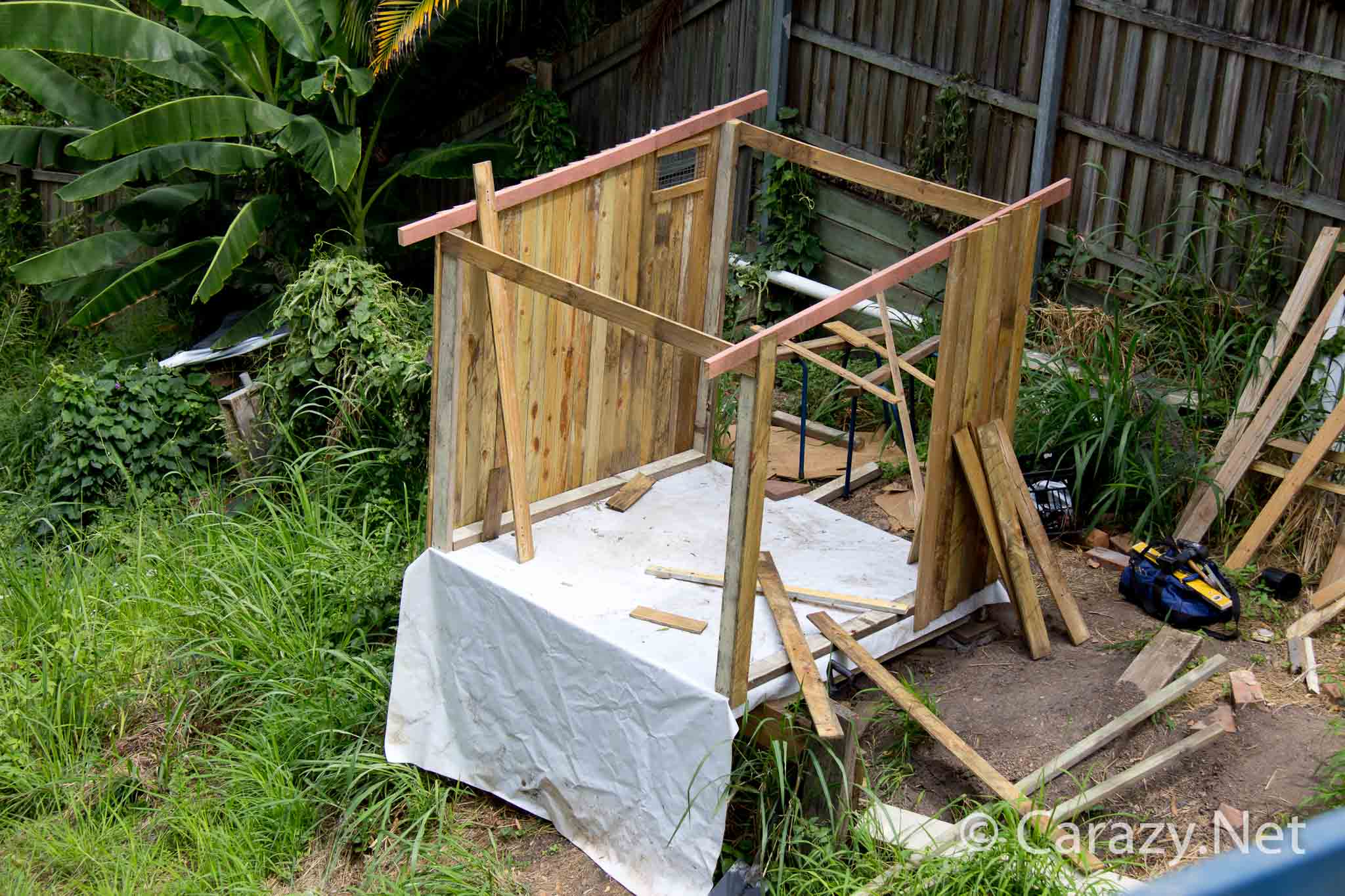Despite the importance of chickens in a permaculture system, I’ve been putting off getting feathered friends as the responsibility of livestock ownership wasn’t something that appealed to me. However I love building things and have been researching coop design for years, so after I helped a friend build a ‘rustic beach shack’ for her music video and once she was done filming, she offered it to me as thanks for my assistance. So now I basically had four walls and a roof to work with and I probably could have just used it as it was but the friends who had assembled the walls kind of slapped things together for the rustic look and my OCD wasn’t going to put up with that. So I meticulously pulled it completely apart and readied the timber for it’s second life.
The coop design was going to be all about me. As in how could I make it ergonomic for me whether it be for maintenance, accessibility or for cleaning. As usual I lurked in forums and read half the internet, grabbing ideas and recommendations from numerous sources then hybridising it into something that I would be happy with. Another constraint was that I had to keep costs to a minimum given my experiment this year to see if I could live on $100/week (After main utility/mortgage bills.) so it would have to be built using recycled and free materials.
Fortunately I’m a hoarder so there was plenty of timber ready to go. I had a heap of 200mm x50mm x 3m pine bearers that in a former life was the “cage of death” pergola which I hung numerous punching bags from, for my Kung Fu students to hit.
I used an existing retaining wall (left) as it was 800mm high and being level would act as a solid plinth. The reason for the large overhang is that when it came time to clean out the coop floor I would have space to position a wheelbarrow under the lip and push the soiled bedding into the barrow. This way it would be closer to where I’d be using the manure. Having the coop high at that end also meant the nesting boxes would be at chest/head height so easy access to retrieve eggs.
The gap underneath the overhang was to allow any pooled water to dry out. The bearers are treated pine not hardwood so I wanted to maximise their lifespan. I screwed joist brackets, normally used to build decks, along the top of the sleeper and then screwed the bearers in place.
On the opposite side I did the same except the bearers were attached to another 200×50 beam such that they were all flush on top.
To keep the frame above the soil and level I had to build a footing for the upright. I used a simple carboard formwork technique I’ve utilised before to minimise the amount of concrete needed and still give me strength and shape. You cut thick cardboard into a box shape suitable to your formwork requirements. Duct tape it together when you’re happy with the shape. Throw a shovelful of mixed concrete in the base as this seals the base of your post from touching the soil. Then place your post in the middle of the cardboard formwork.
I used some scrap galvanised steel mesh to reinforce the concrete. I’ve used chicken wire on other projects with success so you can use it too. Then it was a matter of carefully filling the cavity with concrete I’d mixed in a wheelbarrow.
Several days later you can remove the cardboard and your post and concrete footing are ready to be bolted to your floor.
On the other side I didn’t need the height of a post so I simply concreted together some old bricks and pavers to create a solid footing at the height I needed. There’s a slight tilt on the top paver to allow for water runoff whilst maintaining a level floor framework.
The coop floor is the old floor from my kitchen which I ripped out when I renovated it. It’s 20mm marine ply and perfect for this application. Added block you see halfway along the exposed bearer is there for additional support for the next piece of flooring. The sheet in place has a full bearer in the middle so won’t bow. I am not a dainty man so I didn’t trust the join to sit on 25mm of bearer with my full weight in the middle. The chock gave it s little extra support from bowing.
The second sheet in place and passed the me jumping on it test with flying colours. The first sheet had a bit missing so I made sure the small infill piece had heaps of support by being directly over a bearer and bearer intersection.
Rain added a few delays to the power tool section of the build but the marine ply held up well in the wet.

